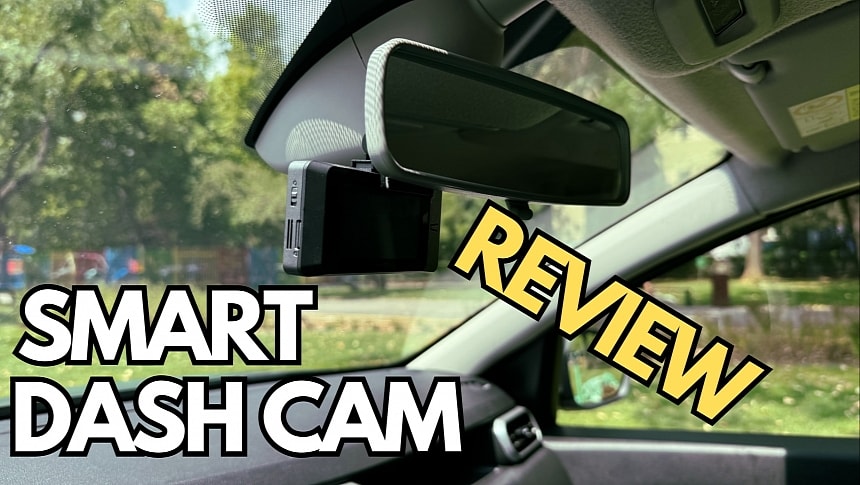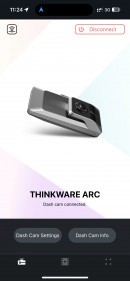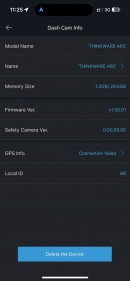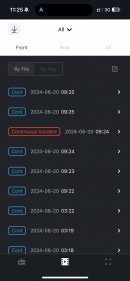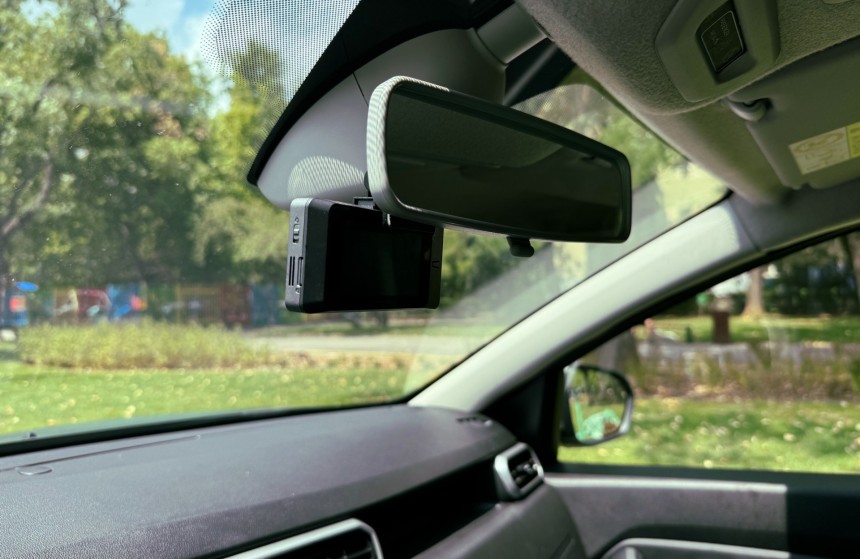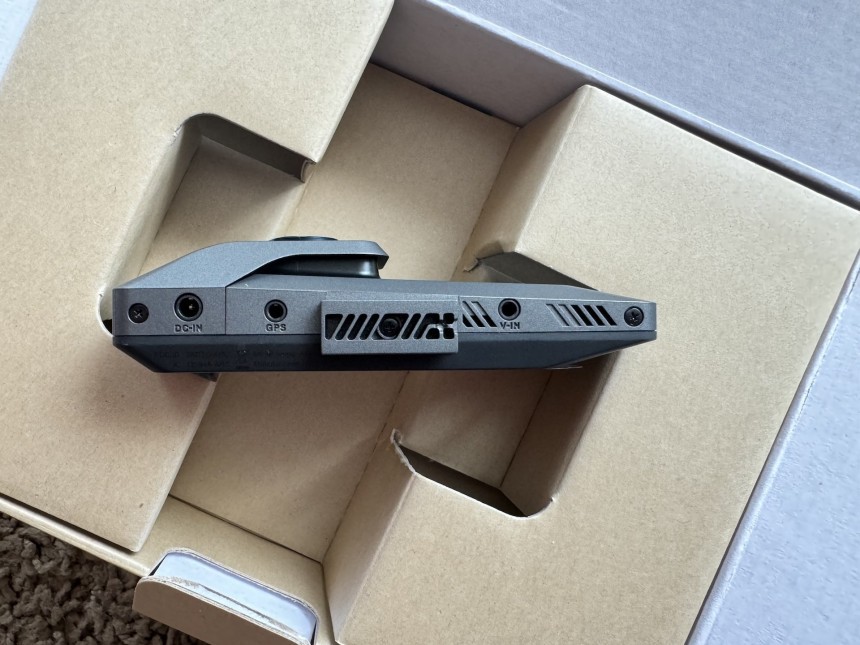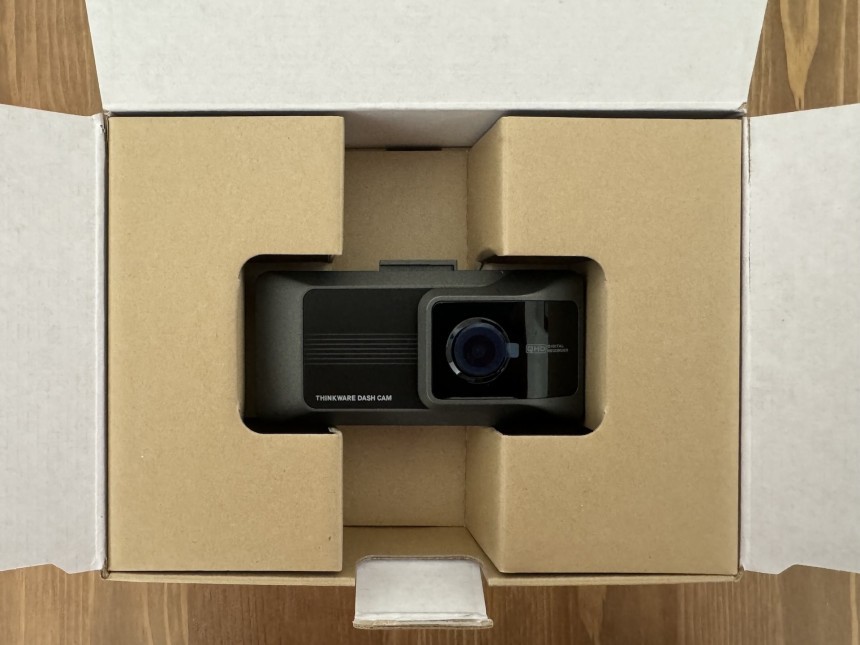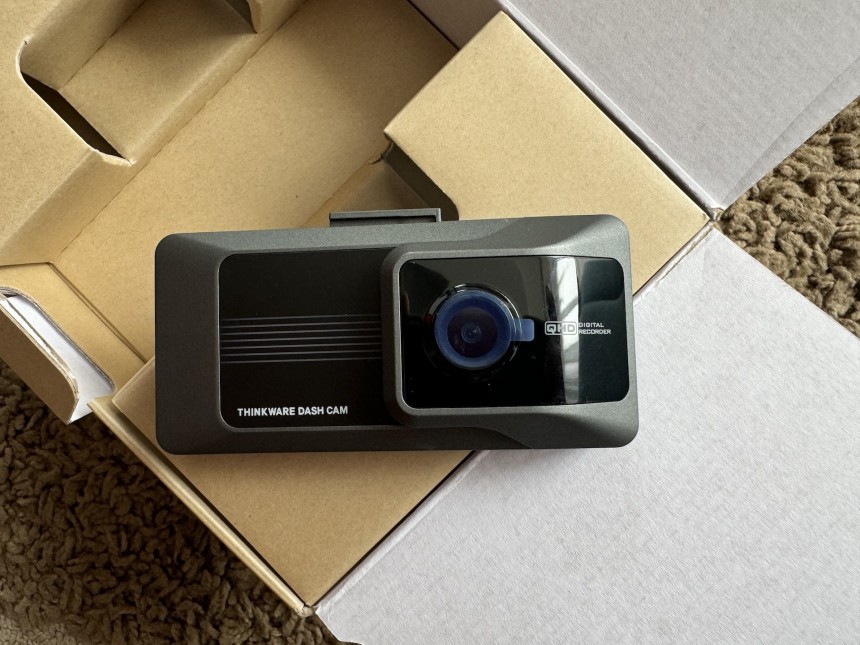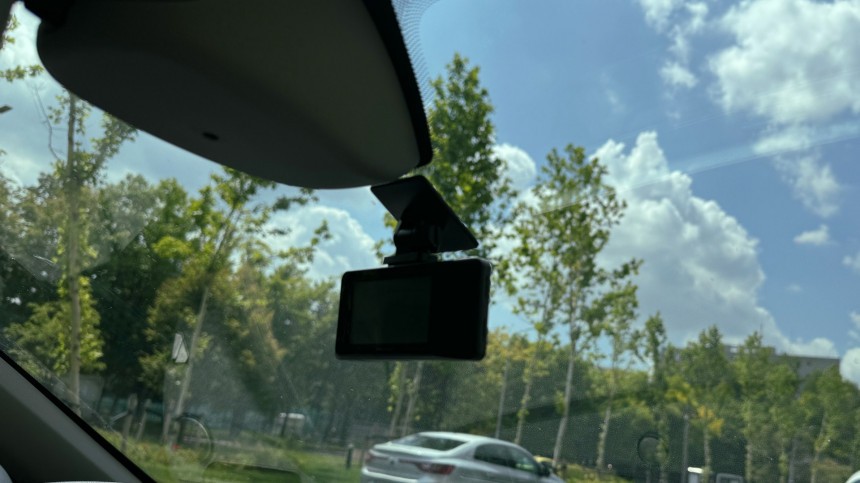Dash cam sales went through the roof in the last few years for two reasons. First, a dash cam is a fantastic driving companion that always keeps an eye on what happens in front, in the back, or around the car, doubling as a permanent witness for any type of incident. Second, they're getting cheaper and better, so drivers no longer have to spend a fortune on such a device.
Thinkware is one of the biggest names in the growing dash cam space, and the company's latest product sports a mix of new-generation features paired with must-have capabilities and high-quality recordings.
The ARC sells as part of a bundle that includes a front and a rear camera, albeit the rear might be more difficult to install without a professional to do it for you. I'll detail the process a bit later, so let's stick with the basics for now.
If you're a tech-savvy person, the first thing you must know is that the dash cam offers 2K 1440P front recording and 30fps recording on the rear camera. The device is fitted with a 4-megapixel Omnivision sensor and sports a 125-degree wide-angle lens, so it's capable of recording everything happening in front of the car – there's also a side benefit to the wide angle, as it can record traffic in front even if you don't install the camera right in the center of the windshield; you'll understand why this is important in a minute.
The Thinkware ARC sports a 2.7-inch LCD touch-capable display, so you can see your settings without needing a mobile phone. You'll still want to pair the dash cam with a smartphone using the integrated Wi-Fi support for full access to everything, including settings and recordings. Thinkware developed a mobile companion app for Android and iPhone that allows you to set up the camera, access all recordings, watch them directly from the microSD card in the dash cam, and download them to your phone.
While the consensus is that dash cams shouldn't be left in the car when you arrive home, the device comes with great features that would come in handy even when the vehicle is parked. The integrated thermal protection means you shouldn't worry about overheating, but the parking surveillance mode is the feature that should convince you to keep the dash cam connected permanently.
The Smart Parking mode allows the dash cam to monitor your vehicle without the risk of overheating. The device enters a low-power mode (triggered by the temperature inside) to monitor incidents involving vehicle impacts. Otherwise, if the temperature in the cabin doesn't represent an overheating risk, the camera can also detect motion, tracking potential thieves when they are spotted near the vehicle.
Parking monitoring doesn't work without professional installation or with an OBD II power cable, as plugging the dash cam into the cigarette lighter socket wouldn't work. Most cars cut the socket's power after you lock the doors, so the dash cam wouldn't be able to continue monitoring without continuous power.
Both the front and the rear cameras support 2K resolutions – 2560x1440 pixels, but while the front unit uses an Omnivision sensor, the rear is fitted with a K302P CMOS sensor. It offers good quality, albeit the rear camera struggles in low light, especially when a vehicle with the headlights turned on gets closer.
The Thinkware ARC can automatically detect incidents, so when you fire up the mobile application and load the recording database, you'll see different flags to help you find "continuous" and "incident" recordings.
Continuous footage is always 1 minute long, while incident recordings are 20 seconds long – the dash cam automatically cuts the recording by adding 10 seconds before and 10 more seconds after an impact. You can't adjust the length of recordings as on the good old dash cams, so if you're looking for settings for 1 or 3-minute long files, they are unavailable.
I noticed that the impact detection is sometimes triggered too often. I asked Thinkware, and the company told me that the continuous sensitivity option might be too high, causing the incident recording due to minor impacts triggered by road conditions. In other words, if you drive on a bumpy road, the dash cam could think you've been involved in an accident, so it starts recording an incident - you can check the recording I linked to here to see how the detection is apparently triggered for no reason.
One part that requires particular attention is how you install the camera. The box includes everything you need to install the dash cam securely, but you must always adjust the angle so that it sees everything in front of the car. You should turn on the camera before using the adhesive windshield mount to determine the best angle.
My car comes with a gigantic sensor box on the windshield. It's placed right in the middle of the windshield, so my solution was to install the camera using the provided tape directly on the back of the mirror. I then adjusted the camera angle to record as much as possible in front of the vehicle. It wasn't the best option, but it works like a charm and isn't as intrusive as it seemed at first glance. This method also makes the dash cam power cable harder to spot.
I'm not necessarily a big fan of the dash cam's design – I think an elongated case like the one used by the VIOFO A119 makes more sense and is less intrusive. However, Thinkware made the ARC fairly slim, so it won't get in the way if you install it in the right place.
Now, let's talk about the quality of the recordings.
The ARC excels in daylight and is easily one of the best choices in this price range. The ARC sells at $219.99, and considering the box includes a front and rear dash cam, an external GPS sensor, and more accessories than you need, it's a great deal.
The quality of the recordings is great when there is the right amount of light, but you still struggle with the typical and occasional glare. A CPL filter could help, and Thinkware recommends this for any dash cam customer who encounters this problem.
The ARC sports a smart auto-exposure setting to adjust the exposure when facing strong sunlight, but the automatic adjustments sometimes take up to several seconds. This is a limitation caused by the image sensor, but it shouldn't impact your experience with the dash cam.
The low-light recordings are exactly as you expect them to be. If you're here because you wonder if the ARC allows you to see license plates in total darkness, the answer is no. The camera comes with a Super Night Vision system that enhances video brightness and reduces image noise in low light, but it won't do wonders.
It does help see certain details in low-light conditions, but unless the other vehicle is close, you can't see its license plate.
However, the ARC offers better quality than most cameras in this price range, and when paired with the parking mode, the night vision system is a great tool for monitoring your car.
The dash cam also comes with several extras, including smart driving alerts. The ARC includes traffic signal alerts and front vehicle departure warnings, as well as speed and red light camera notifications. However, I found them rather intrusive and ended up muting the camera, not to mention that they are sometimes a hit-and-miss, suffering from a lack of consistency that makes them unreliable. For example, the front vehicle departure warning, which alerts when you when the car sitting in front at a traffic light starts moving, doesn't properly detect motorcycles, or if it does, it doesn't issue a notification if the vehicle accelerates slowly.
The dash cam market has expanded at a fast pace lately, and you can find several solid options in the same price range, including models from 70mai. However, Thinkware's compact camera offers great value for the money with new-gen capabilities and permanent parking monitoring, something you wouldn't find elsewhere.
Also, hats off to Thinkware for shipping a microSD card in the box, so when you get the ARC, you can just set it up and start driving.
The ARC sells as part of a bundle that includes a front and a rear camera, albeit the rear might be more difficult to install without a professional to do it for you. I'll detail the process a bit later, so let's stick with the basics for now.
The Thinkware ARC sports a 2.7-inch LCD touch-capable display, so you can see your settings without needing a mobile phone. You'll still want to pair the dash cam with a smartphone using the integrated Wi-Fi support for full access to everything, including settings and recordings. Thinkware developed a mobile companion app for Android and iPhone that allows you to set up the camera, access all recordings, watch them directly from the microSD card in the dash cam, and download them to your phone.
While the consensus is that dash cams shouldn't be left in the car when you arrive home, the device comes with great features that would come in handy even when the vehicle is parked. The integrated thermal protection means you shouldn't worry about overheating, but the parking surveillance mode is the feature that should convince you to keep the dash cam connected permanently.
Parking monitoring doesn't work without professional installation or with an OBD II power cable, as plugging the dash cam into the cigarette lighter socket wouldn't work. Most cars cut the socket's power after you lock the doors, so the dash cam wouldn't be able to continue monitoring without continuous power.
Both the front and the rear cameras support 2K resolutions – 2560x1440 pixels, but while the front unit uses an Omnivision sensor, the rear is fitted with a K302P CMOS sensor. It offers good quality, albeit the rear camera struggles in low light, especially when a vehicle with the headlights turned on gets closer.
The Thinkware ARC can automatically detect incidents, so when you fire up the mobile application and load the recording database, you'll see different flags to help you find "continuous" and "incident" recordings.
Continuous footage is always 1 minute long, while incident recordings are 20 seconds long – the dash cam automatically cuts the recording by adding 10 seconds before and 10 more seconds after an impact. You can't adjust the length of recordings as on the good old dash cams, so if you're looking for settings for 1 or 3-minute long files, they are unavailable.
I noticed that the impact detection is sometimes triggered too often. I asked Thinkware, and the company told me that the continuous sensitivity option might be too high, causing the incident recording due to minor impacts triggered by road conditions. In other words, if you drive on a bumpy road, the dash cam could think you've been involved in an accident, so it starts recording an incident - you can check the recording I linked to here to see how the detection is apparently triggered for no reason.
One part that requires particular attention is how you install the camera. The box includes everything you need to install the dash cam securely, but you must always adjust the angle so that it sees everything in front of the car. You should turn on the camera before using the adhesive windshield mount to determine the best angle.
My car comes with a gigantic sensor box on the windshield. It's placed right in the middle of the windshield, so my solution was to install the camera using the provided tape directly on the back of the mirror. I then adjusted the camera angle to record as much as possible in front of the vehicle. It wasn't the best option, but it works like a charm and isn't as intrusive as it seemed at first glance. This method also makes the dash cam power cable harder to spot.
I'm not necessarily a big fan of the dash cam's design – I think an elongated case like the one used by the VIOFO A119 makes more sense and is less intrusive. However, Thinkware made the ARC fairly slim, so it won't get in the way if you install it in the right place.
The ARC excels in daylight and is easily one of the best choices in this price range. The ARC sells at $219.99, and considering the box includes a front and rear dash cam, an external GPS sensor, and more accessories than you need, it's a great deal.
The quality of the recordings is great when there is the right amount of light, but you still struggle with the typical and occasional glare. A CPL filter could help, and Thinkware recommends this for any dash cam customer who encounters this problem.
The ARC sports a smart auto-exposure setting to adjust the exposure when facing strong sunlight, but the automatic adjustments sometimes take up to several seconds. This is a limitation caused by the image sensor, but it shouldn't impact your experience with the dash cam.
It does help see certain details in low-light conditions, but unless the other vehicle is close, you can't see its license plate.
However, the ARC offers better quality than most cameras in this price range, and when paired with the parking mode, the night vision system is a great tool for monitoring your car.
CONCLUSION
The Thinkware ARC is a great dash cam if you're interested in an all-in-one package without spending a fortune on it. You won't get an internal camera – so if you're an Uber driver who wants a 3-channel setup, the ARC isn't for you – but for most drivers, the front and rear cameras are everything they need.The dash cam market has expanded at a fast pace lately, and you can find several solid options in the same price range, including models from 70mai. However, Thinkware's compact camera offers great value for the money with new-gen capabilities and permanent parking monitoring, something you wouldn't find elsewhere.
Also, hats off to Thinkware for shipping a microSD card in the box, so when you get the ARC, you can just set it up and start driving.
